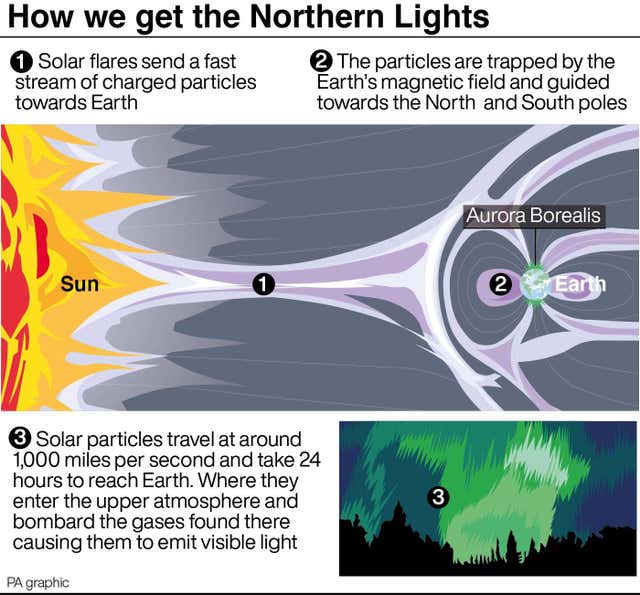The northern lights were seen across the UK on Sunday – and could appear again on Monday night, according to the Meteorological Office.
The Met Office tweeted a series of pictures taken by members of the public which captured the light phenomenon in North Uist in Scotland, North Wales, Cambridgeshire and Shropshire.
The national weather service tweeted: “A coronal hole high speed stream arrived this evening combined with a rather fast coronal mass ejection leading to #Aurora sightings across the UK.”
In a separate tweet, it encouraged users to upload pictures of any other sightings using the hashtag #LoveUKWeather.
The Met Office also said there is a chance of seeing the northern lights again on Monday night.

Alasdair O’Dell, 40, from Dunbeg near Oban, Scotland, managed to capture the lights in Connel, just down the road from where he lives.
He hopes to catch a glimpse of the “spectacular show” again on Monday night.
“I’ll always try and see the Northern Lights if possible. It’s a really exciting natural phenomenon,” Mr O’Dell told the PA news agency.
“We are lucky enough to see them sometimes in Scotland – when its not raining – but Sunday night was the most spectacular show I’ve seen since I’ve been here. I’ll be out again (on Monday night) with my camera.”
Craig Smith, 43, who works in construction and lives in Blackburn, Lancashire, also managed to snap the northern lights flickering in the skies above his hometown.

Mr Smith told PA news: “I’ve seen the lights on several occasions from home (and they are) always great to see.
“The (coronal mass ejection) that hit Earth yesterday evening put on a great show.
“The lights were dancing. (It is) just a shame the clouds began rolling in just as it started.”
Royal Museums Greenwich explains on its website that the lights are caused by solar storms on the surface of the sun giving out clouds of electrically charged particles which can travel millions of miles and collide with the Earth.
Most particles are deflected away but some are captured in the Earth’s magnetic field and accelerate down towards the north and south poles, colliding with atoms and molecules in the Earth’s atmosphere, according to the observatory.
The lights are the product of this collision between atoms and molecules from the Earth’s atmosphere and particles from the sun.

In November last year, strong light displays were witnessed across Scotland.
A Met Office spokesperson said the rare sightings of the aurora borealis further south in the UK on Sunday night were due to the “strength” of a geomagnetic storm and the “strip of cloudless skies” in southern regions.





Comments: Our rules
We want our comments to be a lively and valuable part of our community - a place where readers can debate and engage with the most important local issues. The ability to comment on our stories is a privilege, not a right, however, and that privilege may be withdrawn if it is abused or misused.
Please report any comments that break our rules.
Read the rules here